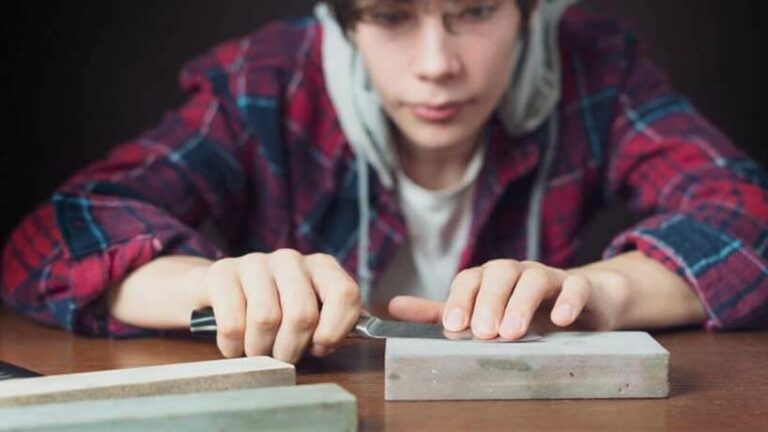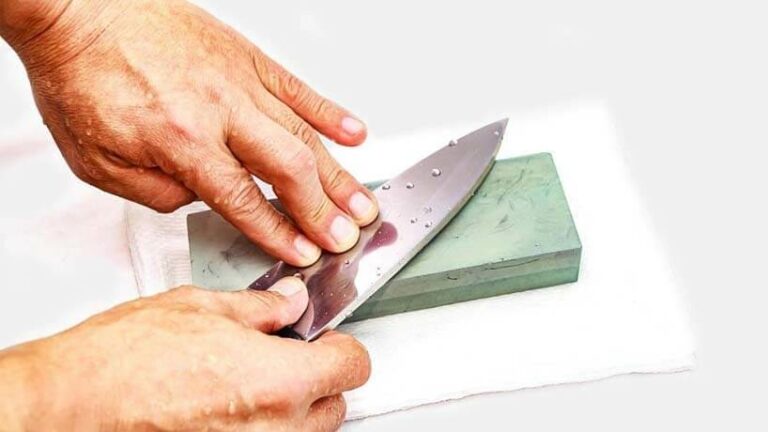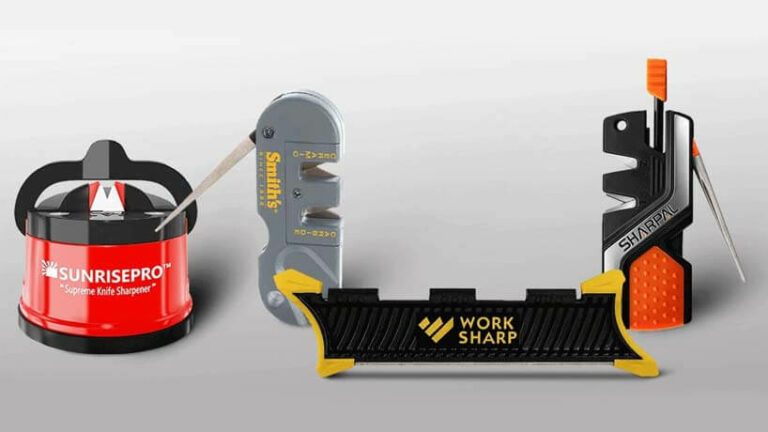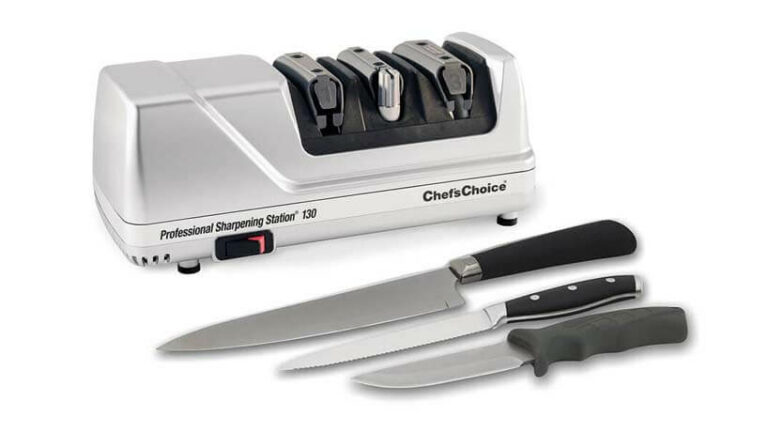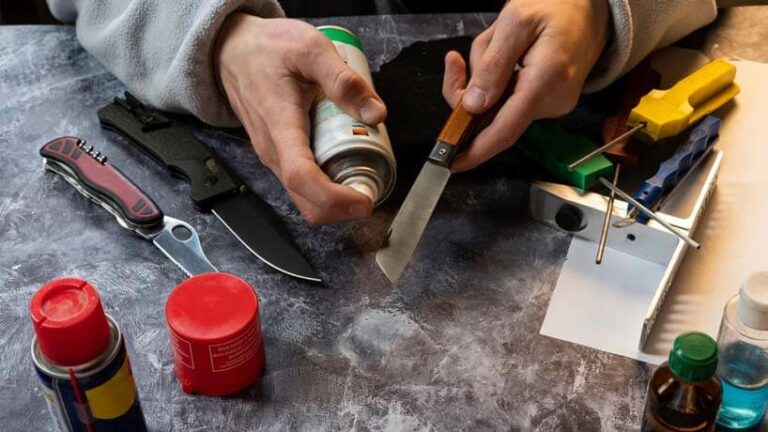There’s not much worse than spending lots of time and money buying a premium or high-quality knife – only to have to replace it after a couple of months because you haven’t taken care of it. Exceptional knives need excellent care and maintenance routines if you want to get top-tier performance and longer effective lifespans.
We’re going to show you how to hone your knife’s edge and get it cutting like it did the day you bought it. This might sound a big claim, but with a little time, practice, and patience, you can relatively easily and affordably get your knife cutting like new.
The good news is that this doesn’t need to cost you an arm and a leg – and you certainly won’t need to pay somebody to do it for you. With our tips and tricks, you’ll know everything you need to about sharpening steels, which one to use, how to use them, and how to treat your knives like they deserve. Let’s jump in!
What Is a Sharpening Steel?
We’ve all heard the saying “iron sharpens iron”, but in this case, “steel sharpens steel”. Cheesy jokes aside, the term “sharpening steel” is a little misleading. Sharpening and honing aren’t the same. When you’re learning how to use a knife sharpening steel, you’ll technically be honing your knife’s edge.
This is because honing deals with re-aligning the steel (without removing any) and sharpening involves taking steel off the knife’s edge to make it sharp again. There are pros and cons to both – though for now – all you need to know is that they aren’t interchangeable and serve very specific functions. Back to the original question…
A sharpening steel is made up of a steel rod core (harder than the steel in your knife) that’s attached to the handle. This core is then usually coated in another steel, but sometimes in ceramic or diamond. Running your knife’s cutting edge along this steel rod – at the correct angle and pressure – will gradually re-align the steel, making the cutting edge sharper and more effective.
We’ll talk about the correct angle, technique, and pressure to use in a moment. Before that though, let’s look at some of the different types of honing steels and when they should be used.
Different Types of Honing Steels?

When you’re learning how to use a steel knife sharpening rod, it’s important to know your options. There are 3 broadly used types of honing steels. The word “steel” can be a little misleading as these different rods use various coatings around a steel core. The most common and widely used are steel-coated rods. These are beginner-friendly and aren’t going to take much – if any – steel off the edge.
Ceramic-coated rods are better for work that needs a light or delicate touch. They’re slower to work with and are a little more expensive and harder to find than traditional steel-coated honing rods. Finally, the most expensive and hardest to use are diamond-coated rods. You run the risk of taking too much steel off your knife’s edge when you use these honing rods.
They’re not very beginner-friendly and you’ll be punished if your technique is off, or you use too much pressure while honing. We suggest using a standard steel-coated honing rod, preferably with a lighter grain, if you don’t have a ton of experience. If you know what you’re doing, then stick with what you know.
What Is the Difference Between Honing and Sharpening?
As you use your knife, tiny imperfection and bends start to show. When you take a closer look, you’ll notice that the steel leans to either side, especially on the areas of the edge that do the most work. Honing is the process that realigns these “leaning” parts without removing any steel from the knife.
Honing is great because it extends the effective lifespan of your knife – but it’s a slower process. Sharpening, on the other hand, removes this misaligned steel and leaves behind a new cutting edge. Every time you sharpen your knife, it gets slightly narrower – eventually needing to be replaced.
Finer-grain honing steels are less likely to remove any steel and are more beginner-friendly but are slower to work with. Think of honing as polishing up your blade’s edge. Sharpening your knife will physically make the cutting edge sharper, and honing keeps it sharp for longer.
Sharpening and honing go hand-in-hand and both need to be used for best results. You don’t need to sharpen your knife very often, but you can hone the edge as frequently as you’d like. A lot of professional chefs like to touch their blades up quickly before they get to work.
How to Hold a Honing Steel the Right Way
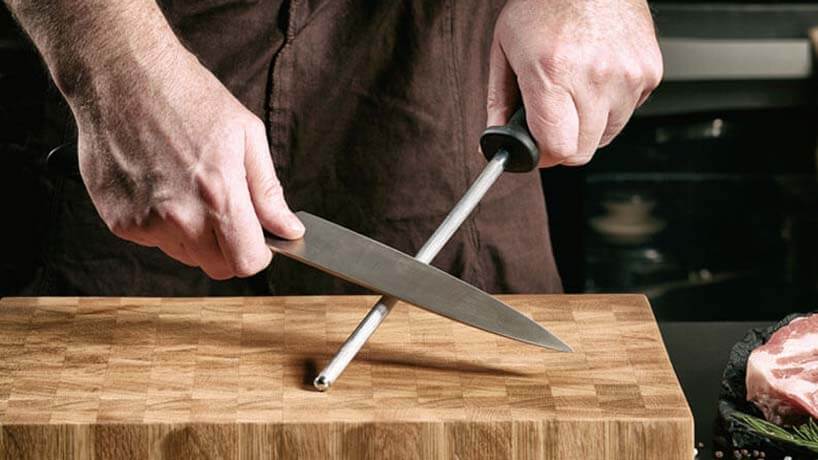
Your technique is essential when you’re learning how to use steel to sharpen your knives. Honing rods are typically held in your non-dominant hand or a fixed position by a clamp or vice. Remember never to sharpen the knife with the cutting edge moving toward your body. One small slip can cause a lot of damage – especially if you’re working with a premium knife.
Hold the honing rod in your non-dominant hand and angle it away from you. Make sure your fingers are under the guard and that you have a firm, but not ax-tight grip on the handle. You want the honing rod to stay in the same place, while your other hand does the movement. This ensures consistency and makes a mistake less likely.
There’s an alternative way to hold the honing steel if you’d prefer something more “fixed”. Turn the rod upside-down and vertically. Place the tip of the rod on a wood surface like a cutting board. Put your thumb on the butt of the handle and comfortably place your hand around the handle. Use just enough downward force to keep the rod from slipping and do your best to keep it vertical.
You’ll use your dominant hand to work the knife up-and-down the length of the rod. This holding technique is my favorite and I find it gives me the most consistent results and is very safe. Make sure that the rod’s tip isn’t on a rough or very hard surface (I use a cutting board).
Correct Honing Technique
Honing is all about consistency. If your technique and stroke pressure are all over the place, your results will be too. It’s important that you progress steadily and don’t try to take on too much at one time – start slow and let the speed build up over time. Use the correct holding technique (as shown in the paragraph above) and make sure you’re comfortable with your setup and rod.
Hold your knife around the bolster (that’s the section where the blade meets the handle). Don’t grip it too tight as you don’t want to have a rigid technique. Honing at the correct angle is essential. If you’re using a Japanese knife (especially the single-beveled ones) then you want the honing angle to be 10° – 14°. Other knives should be honed somewhere between 15° – 20° for the best results.
Place the heel of the blade against the base of the honing rod (closest to the handle) so that the cutting edge is on the bottom. Lay the blade flat against the rod so that it’s sitting vertically. Using the cutting edge as a pivot, rotate the spine of the blade off the honing rod to the honing angle we just discussed.
We’re going to hone into the cutting edge (not away from it) so make sure you keep the angle, speed, and pressure the same across all stokes. Push the blade along the honing rod, pulling it toward you (from the blade’s heel to its tip) as it moves down the rod. When it reaches the bottom, reset the blade back to the starting position.
Alternatively, you can reset it to the opposite side of the rod and do one stroke. This is an excellent way to ensure your results are consistent and that both edges get the same attention. If you’re not alternating sides with each stroke, make sure to work in small sets (5-8 strokes on each side) and then repeat it on the other side.
Bonus Tips for Honing Any Knife!

Here are some pro tips to help you through learning the correct techniques and building the right habits.
- Keep the pressure and speed as consistent as possible for both edges of the knife (that’s why we prefer to use alternating strokes)
- Make sure you clean the rod and the knife before starting – small particles can ruin your results and cause your knife to catch
- As you stroke along the rod, ensure the whole knife’s edge makes equal contact with the honing steel
- Don’t try to go too fast if you don’t have a lot of experience
Keep these tips in mind as you work on your technique and refine your honing skills.
Final Thoughts
We’ve given you quite a bit of information to work through in this guide. Remember not to go faster than you need to. Take your time and get it right, your technique and knife sharpening tools will thank you for it.
Take what you’ve learned here on how to use a sharpening steel and get some practice. Soon you’ll be able to get your knife to its sharpest in just a few quick strokes – and get the professional results you’re looking for!


